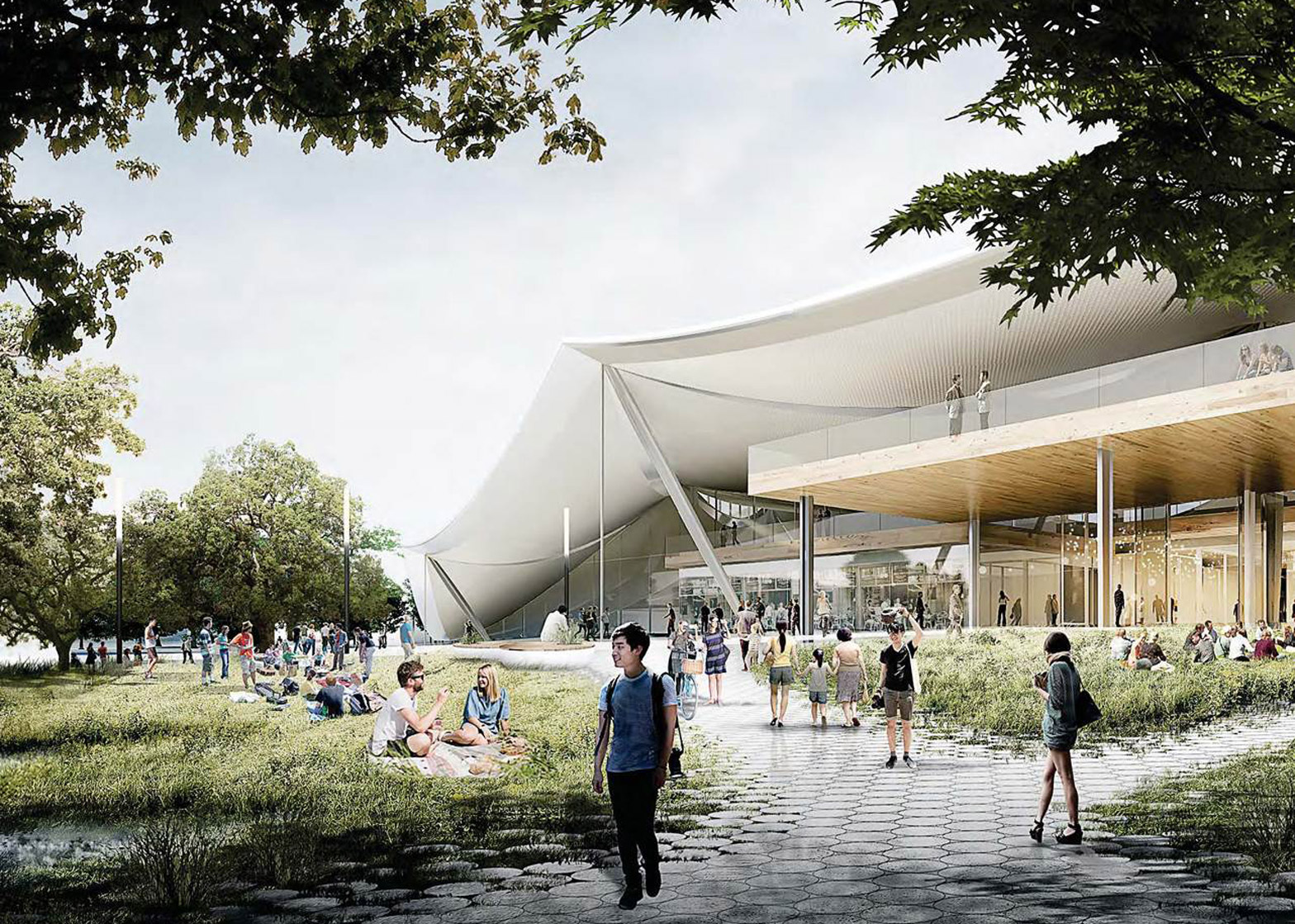BIG and Heatherwick Studio have revealed their latest plans for Google's California campus, after being forced to modify their ambitious design to fit a significantly smaller site.
Submitted to the city planning department last month, the latest Mountain View proposal shows a highly compacted version of the original design, featuring a more regimented grid layout.
Instead of the original village-inspired arrangement, where different areas were grouped into clusters, the two firms have now proposed a big square campus made up of rectilinear modules described as pavilions.
The large translucent canopy proposed to shelter the buildings in the original design is still present, but looks more like a tent than the bubble dome previously shown.
There is also a scaled-down version of the "green loop" – a pedestrian pathway designed to snake through the building, creating a network of indoor/outdoor spaces lined with shops and cafes.
Danish firm BIG and London-based Heatherwick Studio unveiled their ambitious plans for Google's first-ever office complex built from scratch in February 2015 – a sprawling campus that the team claimed would be built by robots.
In an exclusive interview with Dezeen, BIG founder Bjarke Ingels said the project would set a new industry standard for workplace design and help define "Google 2.0".
But the project faced a hurdle just three months later, when city councillors gave social network LinkedIn the majority of the land required to build it.
Google then revealed that it had a backup option – the tech giant already had planning permission to build office and commercial space on another site near Charleston Park.
The plans for the Charleston East site make no mention of the robot-crane hybrids, or "crabots", being used for construction. But the project still features a vast office space where office furniture and partitions can be moved around at will.
"Our goal is to create a highly flexible workplace that can not only adapt to Google's evolving business needs but can also become a destination for the local community," reads the East Charleston proposal submitted to the local planning authority.
Supported by "delicate-looking tent poles", the large canopy overhead will regulate indoor climate, air quality and sound. It will also feature "smile-shaped clerestories".
Ingels and Heatherwick are both in their 40s and could still be considered upstarts in the industry – although both have an impressive portfolio.
Heatherwick's projects include the proposed Garden Bridge for London and the cauldron for the 2012 Olympic Games, while BIG has designed a combined power plant and ski slope, and the underground Danish Maritime Museum.

